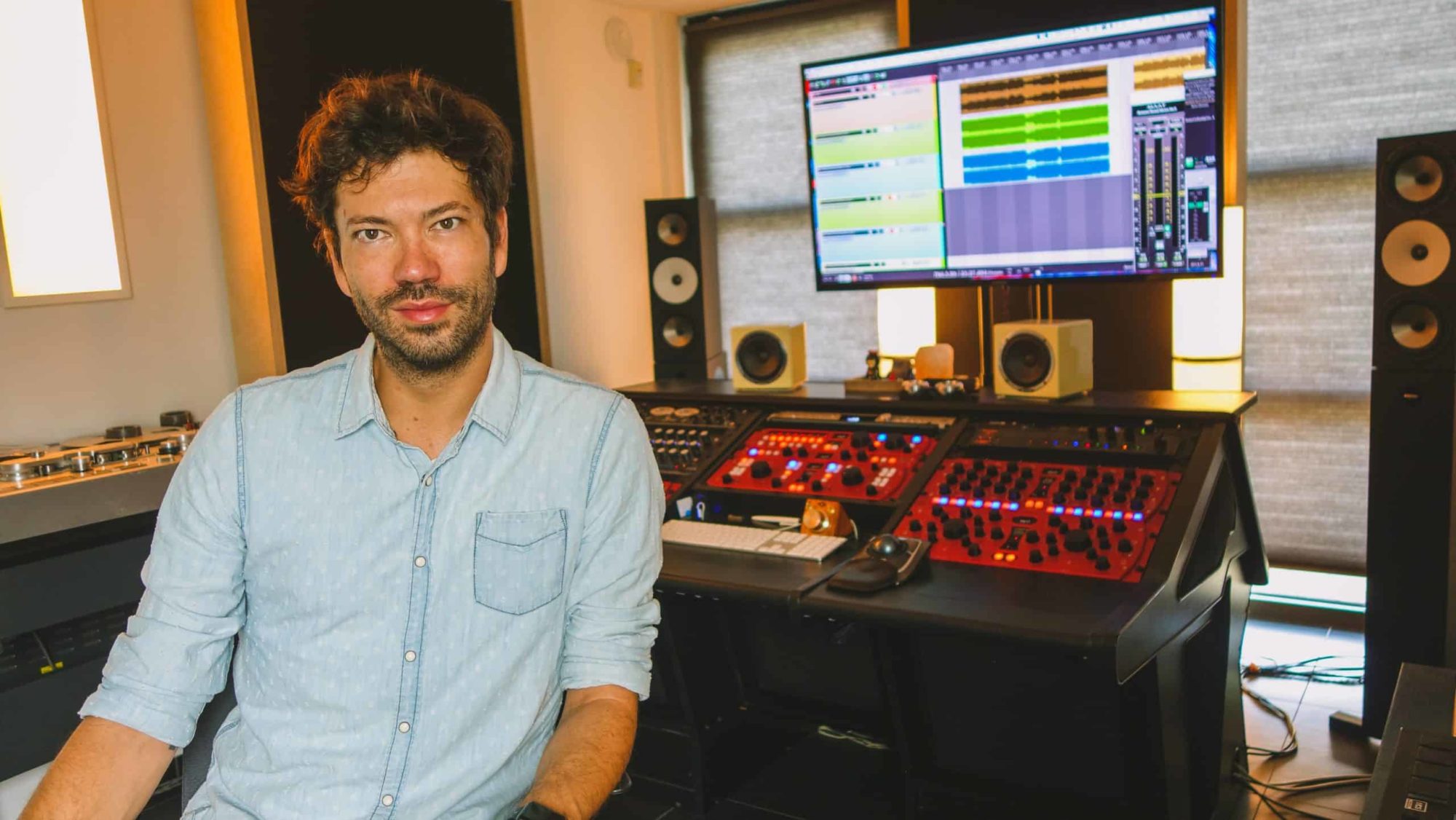“Instant emotions!”
Mastering engineer Dan D’Ascenzo on the importance of feeling the music with Amphion
“In the mastering process, by definition, you need to clean up all “impurities” that might have still been left in the track. For that, you need speakers that search far away into the sound, and open it up almost like a surgeon until they give you what you need to hear,” says Dan D’Ascenzo of Leftright Audio in Liege, Belgium. “I found Amphion Two18 studio monitors and BaseOne25 system very accurate and absolutely versatile for the services I’m offering – mixing, mastering and still some productions. So for me, they perfectly meet all my expectations.”

Dan has started with music back in 1991 at the age of 15. During this early period, he was into DJ-ing, obsessed by “the perfect beat-matching between 2 (and even 3) turntables”. Around 1996, he brought his Roland MC-303 to play live during a DJ set. His talent did not remain unnoticed and Dan was offered a job at a studio. This is when his real professional career commenced. Then followed a degree in audio engineering from SAE Institute, and work on projects in various genres “from Hip-hop/Rap to Indie Rock/Pop and Jazz, all of them mostly for independent and underground artists, labels and projects.”
“Feeling the vibe of the music is the most important thing to me,” says Dan and continues: “I consider mastering as a creative step in the music production path. I like to bring my own signature to the project. Hence, from this point of view, I strongly believe in the relationship artist – mastering-engineer. This, along with engineering technics and know-how, was the core message Dan aimed to convey to his students when lecturing at EMP (Electronic Music Producer) Advanced programs at SAE Brussels. Now, working with “small groups of like-minded students”, Dan continues to share his vision and skills in seminars together with Friedemann Tischmeyer and the Mastering Academy.
When focusing on the technical side of the process, Dan counts mainly on two main DAWs – Presonus’s Studio One and Steinberg’s Wavelab. He uses Studio One for all mixing and stems mastering purposes, while Wavelab is predominantly used for stereo mastering. His basic chain is DAW to Antelope Audio Pure 2 D/A to SPL DMC Mastering Console. “From the Insert I feed the SPL M/S Master which feeds the Custom Audio Germany’s HDE-250A Sontec clone for M/S EQ, then out from the M/S Master straight to the Dangerous Music Liaison which gives me plenty of possibilities between the six inserts, that include SPL’s mastering series like the PQ, PASSEQ and IRON,” explains Dan. For mixing and stems, he uses the UAD Apollo 16, hardwired to the Dangerous 2BUS+ and then to SPL DMC Console Input 2.
Dan says that trained-ears are compulsory to become a quality mastering engineer. Selected equipment also contributes to successful creative decisions. “But if you don’t have a well-treated room with awesome loudspeakers to translate these creative decisions right, you lose time and, more importantly, objectivity,” says Dan and adds: “So yes, monitors are one of the most important parts of my studio!”
Dan was introduced to Amphion studio monitors by Tom Porcell – a fellow mastering engineer, and an Amphion product specialist. After noticing Dan’s Facebook post with his old NS10s, Tom invited him to the Amphion booth at Musikmesse. There, Dan had “a lovely and interesting chat” with Amphion’s founder Anssi Hyvönen. A couple of weeks later, a demo pair of Two18 studio monitors and BaseOne25 landed at Leftright Audio in Liege.
“Actually, it took me two days to find the right position and then it was the instant crush,” remembers Dan. He was about to finish mastering an album and then decided that this would be a good test for the demo set. “It was the perfect timing to master it again from scratch and to get a good version to compare with,” recalls Dan. “While (re)mastering it, I instantly got goose-bumps and started to feel a vibe that I have never discovered before with my previous monitors. It was so intense that it brought tears to my eyes.” The first one he shared his emotions with was his Studio Manager – Cristina who noticed his wet eyes. “I just offered her my chair in front of the desk and simply said: ‘Have a listen… You will understand.”
“I need emotions in the music that I work with,” says Dan. “And the Amphion speakers do it perfectly. They translate those emotions instantly and without any compromises.” According to Dan, Amphion studio monitors draw out the performance of his other gear. “Being so crystal clear, they actually give power to the other hardware, especially the 3D from SPL’s hardware, which I love and is extremely perceptible thanks to the speakers. I consider Amphions a propeller to my set up,” shares Dan.
Dan believes that mastering should serve the music and help convey the emotional message to the listener no matter what the source is. According to him, delivering dynamic masters for the various streaming platforms is essential in that matter. Having the necessary skill set and his customers’ trust helped him specialised in delivering optimised/dynamic masters for these streaming services. “When handling this normalisation, one should be focused much more on the perception of this loudness normalisation than on a fixed target level (e.g. -14LUFS). And Amphion is my perfect companion in achieving this,” says Dan. To better illustrate it, he shares with us a couple of links to Spotify and TIDAL featuring a recent mastering he has done for an unplugged, live recording of a French artist called Rodrigue.
Learn more about:
Two18 studio monitors >>>